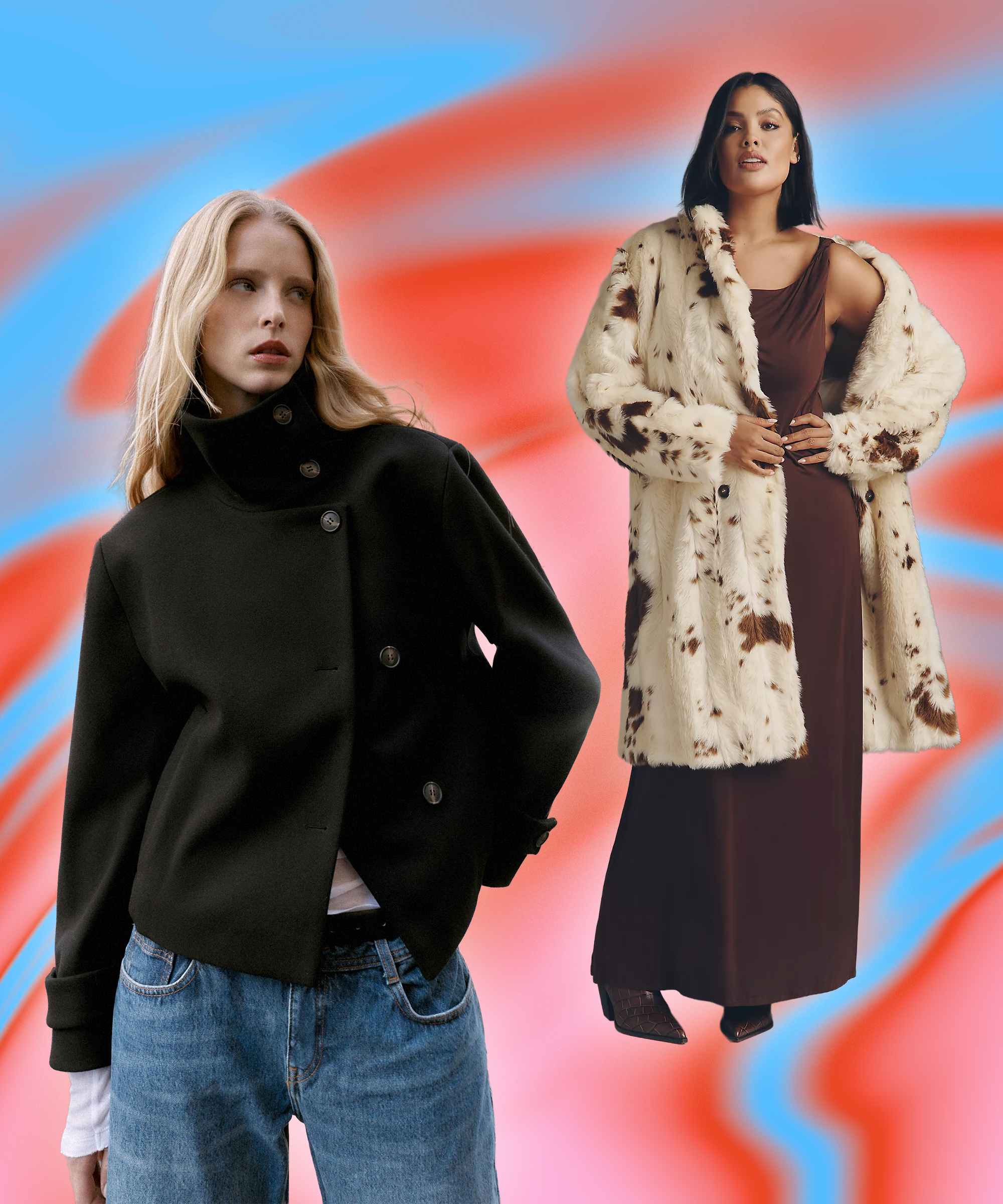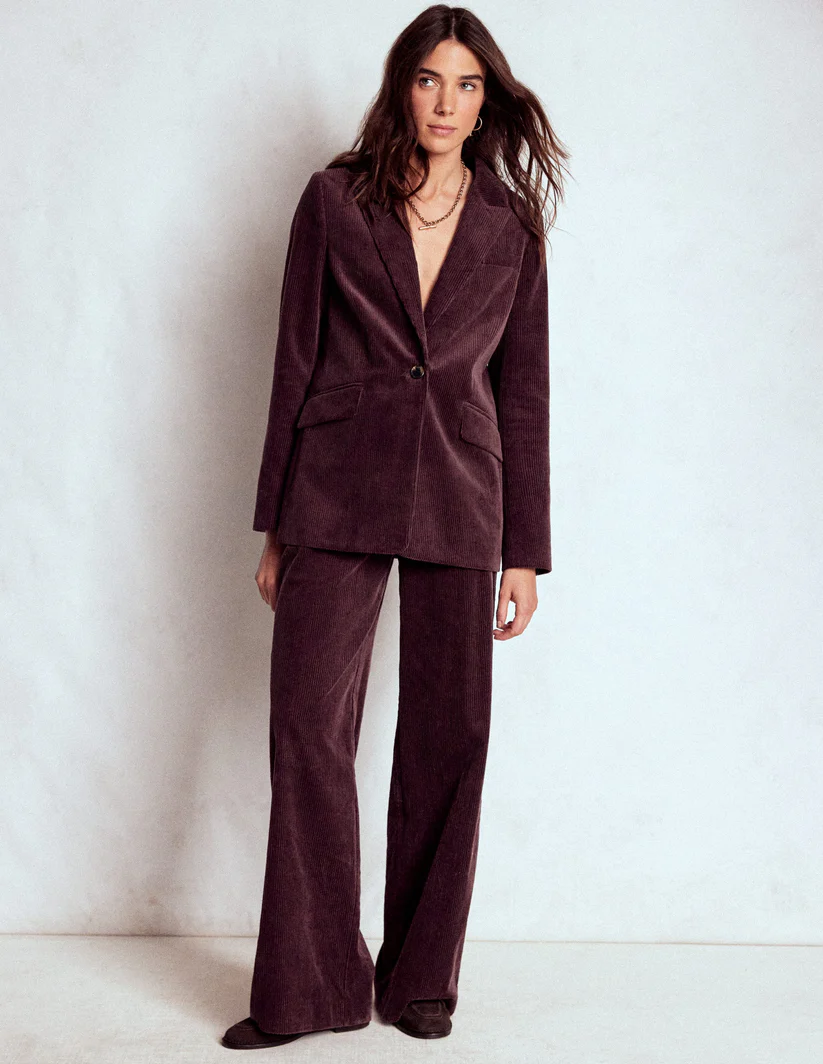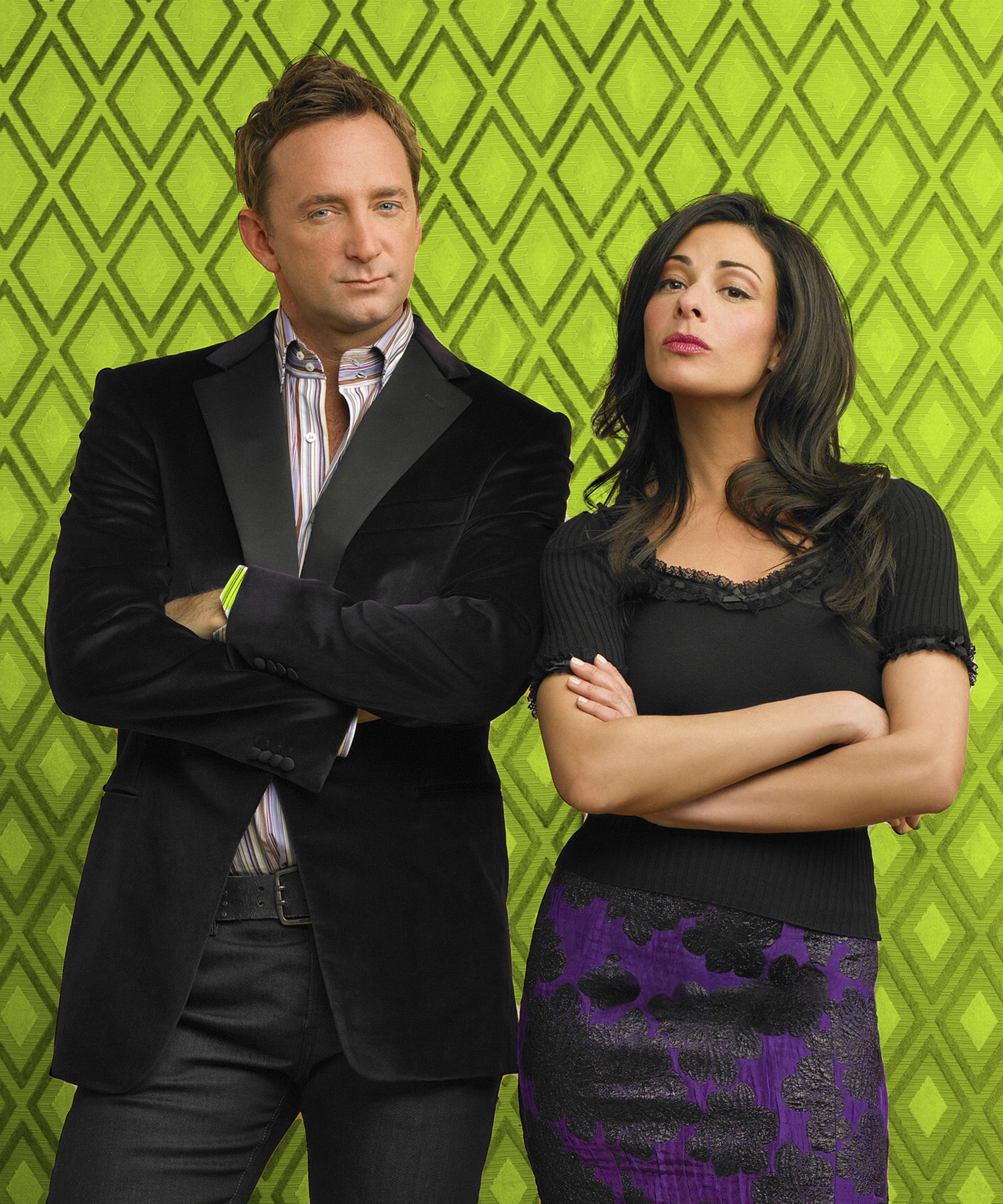

If you, like us, have spent the last ten or so years devouring reality television like it’s your job — or even if you identify as more of a casual, catch-it-while-channel-surfing kind of viewer — there’s a good chance you have a piece of fashion advice from What Not To Wear embedded somewhere in your brain. Whether you still find yourself abiding by it a full seven years after the show went off the air or chose to ignore it all along is another matter, of course, but the fact is, few makeover shows have managed to permeate the cultural consciousness like WNTW did. For millennials who associate the show with their own first attempts to define their style, as well as for older watchers drawn to this new brand of television that reflected their own lifestyles, concerns, and insecurities, it remains an undeniable touchstone. In the annals of reality television, it can also be credited with helping spawn a potent genre of tough-love, feel-good, self-improvement-focused programming that today includes the likes of Queer Eye and Tidying Up with Marie Kondo. Looking back at WNTW is an exercise not just in TV history or sartorial nostalgia (low-rise jeans abound!), but in tracing how those of us who were raised on it have come to understand the importance of well-cultivated personal style, self-actualization, and deciding how much we want to care about the way the world perceives us.
An American spinoff of a British show of the same name, WNTW was co-produced by TLC and BBC, and was helmed, for all but the first season, by stylists Stacy London and Clinton Kelly (London co-hosted the first season alongside Wayne Scot Lucas). The format is deceptively simple: contributors (that’s WNTW-speak for makeover subjects) are secretly nominated by friends or family members, ambushed by the show’s production crew, and offered a $5,000 shopping spree and a free trip to New York City — if they agree to let Kelly and London pick apart their entire wardrobes on national television, of course. Shopping, hair and makeup, and a turn in a harrowing 360-degree mirrored room ensue. And, though it may sound cliche, somewhere along the way, most contributors admit that, even if they lost a lot of their clothes, along the way, they found themselves.
Megan Slankard, who was featured on WNTW’s second season in 2004, says that the show helped her build real confidence, and that, in between takes, producers took her to do things like eat cupcakes and look at Les Paul guitars. A young musician who has since released three studio albums, the premise of Slankard’s episode was that her ultra-casual style — she wore rainbow toe socks and cartoon character T-shirts on stage — was holding her back from being taken seriously by the recording industry. “I never really felt comfortable in my clothes,” she explains. “I always hated shopping. I had scoliosis, and I had to wear a back brace in high school. I was so humiliated; I didn’t wear clothes that fit me. And then when I got out of that, I wore clothes that still didn’t fit me.” Ultimately, Slankard says of the show: “It felt like, ‘We’re not just taking you to go change who you are, we’re taking you to go see who you are, and along the way, we’re going to have some fun.’”
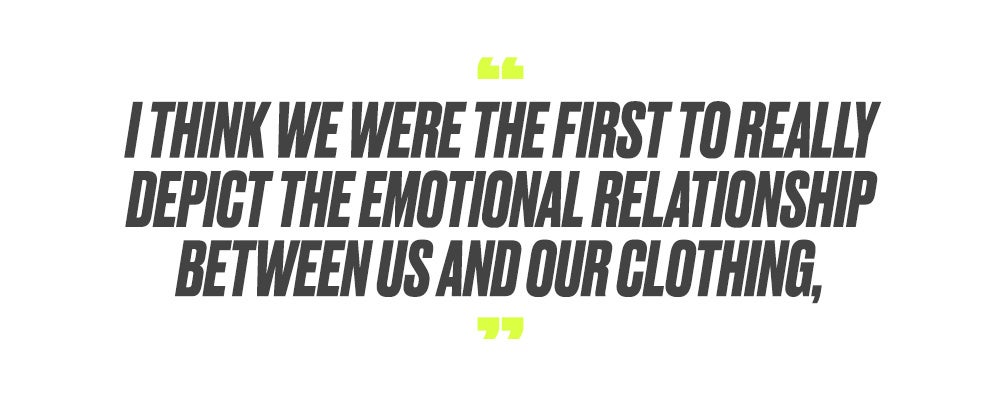
As with other shows of its era, not everything that happened on WNTW would pass muster in today’s cultural climate. While the show did feature a range of body types, there tended to be a lot of talk about finding clothes that are “flattering.” There was also often a desire to feminize women contributors with more traditionally masculine aesthetic sensibilities, cover up women who showed a lot of skin, and instruct older women to dress more “age-appropriately.” Part of the point of the show was to push people, stylistically, in a new direction, thereby unlocking some aspect of themselves they hadn’t previously been in touch with. In doing that, though, it implied that there was something wrong with the way the person was before. And that implication could be damaging not just to the contributors, but to those watching at home. It’s hard to know how WNTW would look today. In early 2019, TLC announced plans to reboot the show this year, but a representative for the network recently told Refinery29 that she didn’t have “any information to share” on whether or not it’s still in the works post-coronavirus.
The line between cruel and constructive critique — particularly when speaking about any aspect of someone’s self-presentation — is crucial to navigate appropriately, and that goes double when the critique is being recorded and monetized. According to those who experienced it first-hand, WNTW really worked to stay on the right side of that equation, which is no small feat, especially when you consider what the day’s counterprogramming was: The Swan, a grisly, plastic surgery-obsessed makeover gauntlet, ran for two seasons in 2004. Bridalplasty (2010 – 2011) centered on brides-to-be, while 10 Years Younger (2004 – 2011) saw contestants standing in a glass box while strangers tried to guess their age. Other reality shows, many of which still exist today, arguably exploit subjects’ mental health conditions and medical problems.
“We had people who confided in us, who trusted us. And I think we took that responsibility really seriously,” London tells us. “The most incredible thing about ‘makeovers’ — or whatever you want to call them — is the transformation process. Because transformation is hope.”
Slankard attributes WNTW’s tone to the personalities and values of Kelly, London, and others on set, like associate producer Cecily Tyler. “There was something so nurturing about it — I know that’s a weird thing to say about reality TV, and I don’t have to say that, I could say whatever I want at this point. But I have genuine love for them,” she says. “There was something special about it. And I did not feel like they were there to make a mockery out of me, which is what I feel like usual reality TV is.”
Sunny Subramanian, a season six contributor who now runs the website Vegan Beauty Review, recalls her experience similarly, revealing she was even allowed to keep a few of the items Kelly and London ostensibly made her toss: “There’s a lot of that tough love, but when the cameras aren’t rolling, they definitely were really sweet because they know it’s a big deal — there’s so much attachment through those clothes. We have memories associated. It’s almost like how certain songs bring back memories.”
It seems hard to overstate the enormous impact the show had on the aesthetics of those who participated in it. Even London, a former fashion editor for the likes of Vogue and Mademoiselle, says it made her think differently about her own sense of style. “My style evolved so much. I was a stylist, used to being behind the camera. If you look at the first few seasons, I don’t know what the hell I’m wearing,” she laughs. “It took me a good couple of seasons to apply those rules to myself, as well.” But the truly remarkable thing is how much those style lessons still resonate, all these years later, with the people who watched it at home.
The mid-to-late aughts were a weird time to develop a sense of style. Low-rise jeans, chunky highlights, and ruffled minis are trends that have aged less like fine wine and more like that questionable takeout that’s been hanging out in your fridge for four days. It was, paradoxically, a fashion-conscious time that wasn’t necessarily fashionable. The 2000s saw average Americans become increasingly aware of fashion with a capital F — the era marked the birth of street style and fashion blogging, the invention of the high-profile celebrity stylist, and the zenith of the “It bag.” Thanks to the rapid popularization of the internet, it was the first time when anyone other than glossy magazine editors and the designers who catered to them had a platform to say anything about fashion. And yet, even those who were ostensibly dressing “well” at the time look back on many ensembles (and the dark orange spray tans that underpinned many of them) and physically cringe. Inevitably, then, some of the pieces and looks touted as aspirational on the show — pointy-toed flats, boot-cut jeans, hobo bags, etc. — feel laughably dated from a 2020 vantage point. On the flip side, there are certain contributors whose original looks would likely have been more palatable by today’s style standards. One can’t help but notice, for example, that Slankard’s jeans-and-a-tee performance looks, so maligned on the show, aren’t all that different from what many of today’s young female musicians, from Maggie Rogers to Halsey to Billie Eilish, sometimes wear on stage.
And yet, somehow, many of the educational underpinnings of the show remain surprisingly timeless, even if the concept of having a set of “fashion rules” does not. The fact is, pointed shoes really do make your legs look longer, pieces that cinch at the waist will create curves, and professional tailoring really is worth it if you want your clothes to fit perfectly. Of course, these style tricks only matter if these sartorial features are things you aspire to have. And maybe you don’t — but many other people do. London says that it’s these kinds of readily applicable lessons about which people still approach her to discuss. (Yes, she still gets recognized all the time — largely thanks to her hair’s signature gray streak, she says, but also from just the sound of her voice.)
While it’s true that the concept of dos and don’ts now feels pretty dated, the reason why WNTW still feels relevant is that its underlying ethos was about more than just a set of style rules.
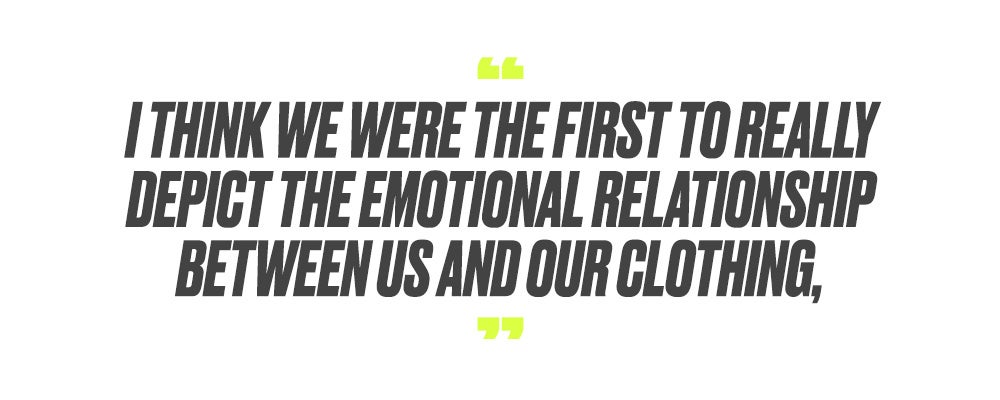
“I think we were the first to really depict the emotional relationship between us and our clothing,” notes London. “Between the way we feel about ourselves, and the way we dress ourselves; between how what you wear and controlling the narrative of your own visage is tantamount to how you’re doing in your life. Are you getting what you want? These are questions that nobody was really posing.”
“There’s this really strong sense [in the show]of, if you can dress better, you will be more of a success: this will be better for your personal life, it will be much better for your professional life,” agrees Dr. Misha Kavka, a professor of film, television, and media studies at the University of Auckland, New Zealand, and the author of two books on reality television. “That sense of democratizing success, the idea of, most of you out there can’t afford or wouldn’t even know where to turn for a stylist — it basically closes the gap. It brings the stylist and the knowledge of a stylist into normal lives.”
Pablo Picasso once said, “Learn the rules like a pro, so you can break them like an artist,” and perhaps that concept is part of the reason fans of WNTW responded so strongly to London and Kelly’s assertions about what looks good in a technical sense (which, it’s worth noting, were based on similar decrees set out by the hosts of the show’s original British iteration). Fashion isn’t something that comes naturally to everyone, but personal style usually is to some degree, and if there’s a way to marry those two things, well, isn’t that we all strive for when staring into our closets every morning? Indeed, were the show to make a comeback in the near future, Dr. Kavka says this would be the biggest thing it would need to place more emphasis on: “They can keep some of the language and the rules, but they’re going to much more obviously adapt those rules for everyone’s own situation, because we’re now in the era of everyone’s own truth.” London, meanwhile, says a rebooted version could benefit from spending more time in contestant’s homes and closets, getting a stronger sense of their day-to-day realities.
While Slankard says most of the clothes she got from WNTW weren’t exactly her — save for a pair of knee-high Anna Sui boots she still owns and loves — the experience started her on a journey of figuring out what her personal style looks like, both on and off stage. “I had the tools to figure it out,” she says. “I felt like, okay, I understand this now. Clothes aren’t just something you put on your body to hide your nakedness. Clothes are an expression of you, and you look good in something when you feel good in something.”
Subramanian, meanwhile, was wearing fairy wings, glittery makeup, and lots of thrifted polyester when she was on the show. In the years since, she’s reintroduced some of the sparkly eyeshadow, but has outgrown the wings and the flammable fabrics. “Some of it, you can’t bury, when it’s just who you are to the core. You make little changes here and there, but your baseline is always gonna be your baseline. But I definitely have refined and homed in on my style. I still like to play around and be flirty and fun, but I keep it less obnoxious,” she says. She also laughs when she recalls how, at a reunion party in Vegas years later, London showed up with her own eyelids shellacked in gold glitter.
Like all successful makeover shows, though, there was something deeper at play on WNTW than pure aesthetics. According to Martin Hardy, a casting director on the show’s final two seasons, the show intentionally cast women from different walks of life so that, no matter who you were, you would see yourself reflected in the WNTW canon. (That being said, the show certainly should have been more racially diverse and size-inclusive.) “It was about making sure we were having diversity across the season, and hitting these buckets that would be relatable to the audience, so they could see themselves and see fun, accessible ways to dress for their body type and their confidence,” explains Hardy, who is now the co-president of Paired Up Media, a casting service.
The core appeal of reality TV generally, and makeover shows especially, is witnessing someone else’s evolution, and contemplating the potential for our own. By learning about other people’s problems, seeing their shortcomings, understanding their ambitions, and watching them grow in a way that’s, well, real, we can think about our own potential journeys. It’s a positive kind of voyeurism that allows us to believe that maybe we, too, can improve our circumstances, should we so choose. And should we decide that, screw it, we don’t much care whether people think the way we dress is weird or old-fashioned, hey, that’s a part of the journey also.
The greatest legacy of What Not to Wear, then, isn’t the fashion tips, the mirrored dressing room, or London and Kelly’s surprisingly tender relationships with contributors. It’s that it helped teach us how to see ourselves more clearly, both as we are and as we wish to be. Through the experiences of the brave people on screen, we were able to try on imaginary identities from the comfort of our own couches. It helped us understand fashion as a language, with rules that are meant to be broken or ignored, or perhaps even remembered for years to come.
In its early days, reality TV was an easily mocked amusement that “serious” people talked about in hushed tones. Today, it’s an Emmy-awarded genre in its own right, and perhaps the most important and relevant form of entertainment in a world where we document and distribute every moment of our lives in high definition. But now, against the backdrop of anxiety-inducing headlines and societal upheaval, the previously low-stakes genre provides welcome relief (See: Hyori’s Bed & Breakfast ), cultural commentary (see: Survivor) and an examination into how the country got here (see: Vanderpump Rules). In 2020, there’s truly no escape from reality, whether it is playing out on our screens or outside our door.
Like what you see? How about some more R29 goodness, right here?


